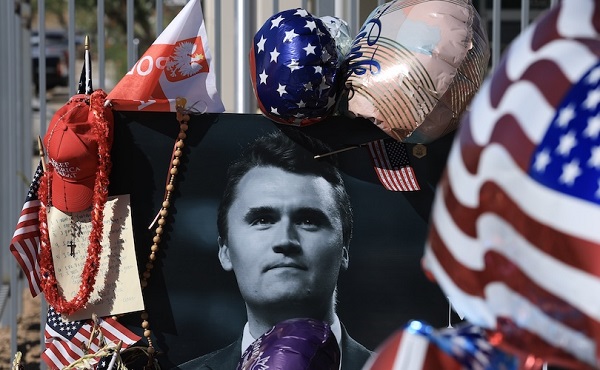National
Graves and school murders? What were we thinking?
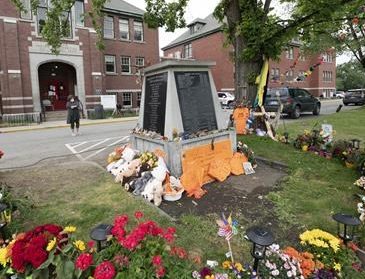
From the Frontier Centre for Public Policy
The year 2021 was the year of the Kamloops graves.
It was the top news story of the year. It was reported by CBC and all mainstream media that ground penetrating radar had detected remains of 215 indigenous children who were found buried in the old apple orchard on the grounds of the former Kamloops Indian Residential School.
The burials had taken place in secrecy in the middle of the night. Priests and nuns, who were apparently responsible for the deaths, wanted to hide the results of their crimes and forced students, “as young as six” to dig the graves of their dead classmates.
Indigenous leaders claimed there were tens of thousands more murdered and secretly buried indigenous children across the length and breadth of Canada — children who “went to residential school and never returned.”
The Trudeau government ordered flags flown at half mast, where they remained for six months. It made $320,000,000 available to indigenous communities that wanted to search for more missing children. Many accepted the offer.
2023 was the year this whole story fell apart.
There were no secretly buried children.
There were no “thousands of missing children.”
The junior ground penetrating radar operator, Sarah Beaulieu, who made her sensational claim in 2021, had most likely mistaken the remnants of 1924 septic field trenches for graves.
The indigenous children who died at residential schools mostly died of tuberculosis, as did those who never attended a residential school. Most were buried on their home reserves and their burial places had simply been forgotten.
Simply put, all of the hysteria of 2021 over secret burials and missing children was for nothing. Canada had fallen for the biggest fake news story in the history of the nation.
A new book of essays by Professor Tom Flanagan and CP Champion examines how this false story took hold and how it was debunked.
Tom Flanagan is Canada’s foremost expert on indigenous issues. Champion is the editor of the Dorchester Review, where many of these valuable essays can be found.
The essays tell the story of how Canadians fell for a story that made no sense from the outset. Why would priests kill and secretly bury children? There was no historical record of any such events ever happening.
If the children went to the residential school “and never returned” wouldn’t there be some record of such a thing happening — a parent complaining, a police report, a complaint to a chief etc.? But there was no such thing.
The odd thing is that neither CBC nor practically any other reporter asked any such questions. They not only repeated the false claims, they amplified and exaggerated them. So 215 “soil disturbances” (which is what the radar had detected) became “human remains,” “bodies,, “graves” and even “mass graves.”
Conrad Black wrote the foreword to the book. Black is one of the few Canadians who recognized from the outset the Kamloops claim was absurd. Black was also one of the few writers who has consistently denounced the disgraceful claim that Canada is guilty of any kind of genocide.
He properly criticized former Chief Justice Beverly McLachlin when she first put forward the baseless claim in 2015 and he has consistently defended Canada against such slander.
The writers (disclosure: I am one) systematically take apart the false Kamloops and copycat claims. Professor Jacques Rouillard, using research done by Nina Green proves the deaths of the KIRS students who died while enrolled at the school were properly documented, that the deaths were mainly from the diseases of the day and that the children were almost all buried on their home reserves.
These children had not been buried in secrecy, they were never “missing” and there was absolutely nothing sinister about their deaths.
Children from the community who attended day schools, or didn’t attend school at all, died in similar numbers from the same diseases. Death from disease was simply a sad fact of life and had nothing to do with whether or not a child attended a residential school.
The only “evidence” that could possibly support the secret burial thesis — apart from the usual conspiracy theories that are told in every community — was the report from Sarah Beaulieu of soil disturbances detected by ground penetrating radar that she opined could be possible graves.
However, on closer inspection these claims fall apart. The authors expose Beaulieu’s negligence in failing to research previous excavations before recklessly venturing an opinion on such an important matter.
Her other mistaken assumptions, such as false reports about a child’s tooth and bone, are also exposed. It is noteworthy the T’kemlups Band originally promised to release Beaulieu’s report to the public but reneged on that promise when it became apparent the report was unreliable, just as they have reneged on their stated intention to excavate.
The other essays examine the other claims made about evil priests, secret burials and missing children. The authors systematically dissect the claims, and expose them as the false claims that they are.
As for the claim there are “thousands of missing children” who are alleged to have entered residential schools “and never returned” to their parents, and now lie in “unmarked graves” Professor Flanagan puts it succinctly: These are not “missing children” — they are “forgotten children.” They now lie in unmarked graves for the simple reasons that their families didn’t keep up their gravesites and forgot about them.
The current grave-searching mania now occurring in indigenous communities is fueled by the $320,000,000 that then Indigenous Affairs Minister Marc Miller dangled before poor indigenous communities like golden carrots.
Other essays in the book examine other common misconceptions about residential schools, generally. One of the most persistent is the claim — consistently made by CBC for two decades — that “150,000 children were forced to attend” residential schools.
This claim is completely untrue.
Prior to 1920, status Indian parents were not required by law to send their children to any school — and most didn’t. After 1920, status Indian parents could choose between sending their children to day schools or residential schools. It is only where no day school was available that parents were required to send their children to residential schools.
But even then, there was seldom enforcement of that law. Only in the case of orphans or severe child neglect (usually due to alcohol abuse) was parental consent dispensed with (for obvious reasons).
CBC has been advised of their repeated reporting error, but continues to push this misinformation. Their justification for doing so is a word salad of obfuscation that is either meant to mislead or shows incompetence on their part.
In sum, the hysteria following the May 2021 announcement 215 “graves” had been discovered at Kamloops is not something that is easily explained. Why most Canadians seemed willing to accept such a preposterous claim in the first place will be a subject for historians and psychologists for decades.
Why the Trudeau government — without a shred of real evidence — ordered flags lowered for months; why the CBC and other mainstream media failed to ask even the most elementary questions about claims that they must have known were false; why indigenous leaders decided to put forward a false narrative that they must have known would eventually be exposed as a fraud — these are all questions examined in the revealing essays in this important book.
Although CBC — and even government publications — continue to put out fatuous claims about “graves,” “probable graves” and “human remains” the international community concluded some time ago that Canada succumbed to some kind of mass hysteria in May 2021, when the preposterous Kamloops claim was first made.
Was this national gullibility related to the strange lockdown years? Was it “Canada’s George Floyd moment? Was it “Canada’s woke nightmare?”
These are questions readers can ask themselves when reading these essays. Professor Flanagan and Chris Champion deserve a lot of credit for swimming against a tide of wokeness to put out this important book.
They are part of a research group — not afraid to be called “deniers” — who wrote the essays published in the book and initiated the Indian Residential School Research Group where additional information can be found.
For original documents and primary sources readers can go to indianresidentialschoolrecords.com.
In May of 2021, Canadians fell for “fake news”. There is an old saying: “Fool me once, shame on you. Fool me twice, shame on me”.
This book should be read with that saying in mind.
Together with the question: “What were we thinking?”
Brian Giesbrecht, retired judge, is a Senior Fellow at the Frontier Centre for Public Policy.
Business
Canada has given $109 million to Communist China for ‘sustainable development’ since 2015
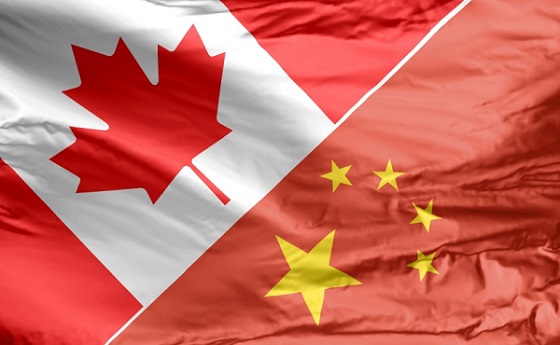
From LifeSiteNews
A briefing note showed Canadian aid has gone to ‘key foreign policy priorities in China, including human rights, gender equality, sustainable development, and climate change.’
A federal briefing note disclosed that well over $100 million has been provided to the Communist Chinese government in so-called “foreign aid” to promote “sustainable development” that includes woke ideology such as gender equality.
As reported by Blacklock’s Reporter, a recent briefing note titled Assistance to China from May for the Minister of International Development showed $109 million has gone to “key foreign policy priorities in China, including human rights, gender equality, sustainable development, and climate change” since 2015 and $645 million since 2003.
The briefing note asked directly if funding was “going to the Government of China.”
In reply, the briefing note stated, “Canada has not provided direct bilateral assistance to Chinese state authorities since 2013, though it continues to provide small amounts of funding to international partners and non-state partners on the ground.”
Former Prime Minister Justin Trudeau came to power in 2015 and increased relations with the Communist Chinese regime. This trend under the Liberal Party government has continued with Prime Minister Mark Carney.
During a 2025 federal election campaign debate, Conservative Party leader Pierre Poilievre called out Carney for his ties to Communist China.
Conservative MP Andrew Scheer has consistently called out any money at all going to China, saying, “I don’t believe Canadian taxpayers should be sending any money to China.”
“We’re talking about a Communist dictatorial government that abuses human rights, quashes freedoms, violates rights of its citizens, and has a very aggressive foreign policy throughout the region,” he noted.
Scheer added that he has been calling on the Carney Liberals to “stand up for themselves, stand up for Canadians, stop being bullied and pushed around on the world stage, especially by China.”
Most of the money in foreign aid was spent through globalist-backed agencies such as the World Bank and the United Nations Development Program. Some 39 percent of the money was said to have gone straight to Chinese recipients, but no projects were itemized.
Other countries have received millions of dollars in foreign aid, with $2.1 billion going to Ukraine, $195 million to Ethiopia, $172 million to Haiti, and $151 million to the West Bank and Gaza last year.
Foreign aid to all nations totaled $12.3 billion.
LifeSiteNews recently reported that the Canadian Liberal government gave millions in aid to Chinese universities.
China has been accused of direct election meddling in Canada, as reported by LifeSiteNews.
LifeSiteNews also reported that a new exposé by investigative journalist Sam Cooper has claimed there is compelling evidence that Carney and Trudeau are/were strongly influenced by an “elite network” of foreign actors, including those with ties to China and the World Economic Forum.
MAiD
Study promotes liver transplants from Canadian euthanasia victims

From LifeSiteNews
A new study encourages transplants from euthanasia donors, saying that harvesting the organs of people killed by euthanasia has a ‘real impact’ on organ supply.
A concerning new study shows that liver transplants from euthanasia donors yield similar results as those from other donations, a finding that could increase pressure to euthanize vulnerable Canadians.
On October 26, the Journal of Hepatology published research comparing liver transplants in Canada from donations after circulatory death – a problematic method of organ donation – and from donations of those who were euthanized, in the latest study into increasing organ transplants from euthanasia or so-called “medical assistance in dying” (“MAID”) victims.
“Our study provides the first large-scale Canadian experience, paralleling previous studies from Belgium and the Netherlands, showing that outcomes are positive, while also demonstrating the real impact that MAiD donation can have on the availability of organs,” co-lead investigator A.M. James Shapiro declared.
“While not all individuals pursuing MAiD are suitable for donation for various reasons, we hope that our study will allow a better understanding of the potential role of organ donation following MAiD,” he continued.
Shapiro highlighted, in his view, “how impactful it can be for saving lives of many people in their final act of generosity.”
Canada is one of few countries, alongside Australia, Belgium, Spain, and the Netherlands, that harvests organs from euthanasia victims. Under the Liberal government, Canada has become the world leader in organ donations from people who obtained state-sanctioned euthanasia.
Recently, the interest in the practice has boomed, after the heart of a euthanized Canadian man was successfully harvested and donated to an American man with heart failure.
While many Canadians are left without necessary healthcare and even goaded to end their lives through euthanasia, the Liberal-run health system appears to prioritize the lucrative business of harvesting organs from Canadians killed off by their euthanasia regime.
According to some estimates, a heart is “worth around $1 million in the U.S. Livers come in second, about $557,000, and kidneys cost about $262,000 each. Not to speak about human skin ($10/inch), stomach ($500), and eyeballs ($1,500 each).”
Additionally, as LifeSiteNews has extensively covered, health officials have sounded the alarm over organs being harvested from still living patients in order to obtain fresh organs for transplants.
Similarly, conservative Irish think tank academic Dr. Angelo Bottone has warned against a push to harvest organs from euthanasia victims before they are killed.
“While donation after euthanasia is already happening in those countries, doctors are now discussing harvesting organs before euthanasia patients are declared dead, in order to preserve organ viability,” Bottone wrote.
“They propose that organs be removed under general anaesthesia before the patient is declared dead, thereby maintaining continuous blood circulation and oxygenation to the organs until the moment of retrieval,” the scholar continued. “This method could significantly improve the quality and quantity of organs available for transplantation.”
The most recent reports show that euthanasia is the sixth highest cause of death in Canada. However, it was not listed as such in Statistics Canada’s top 10 leading causes of death from 2019 to 2022.
Asked why euthanasia was left off the list, the agency said that it records the illnesses that led Canadians to choose to end their lives via euthanasia, not the actual cause of death, as the primary cause of death.
According to Health Canada, in 2022, 13,241 Canadians died by lethal euthanasia injections. This accounts for 4.1 percent of all deaths in the country for that year, a 31.2 percent increase from 2021.
-

 Business2 days ago
Business2 days agoThe painful return of food inflation exposes Canada’s trade failures
-

 Business18 hours ago
Business18 hours agoTrans Mountain executive says it’s time to fix the system, expand access, and think like a nation builder
-

 Business2 days ago
Business2 days agoCBC uses tax dollars to hire more bureaucrats, fewer journalists
-
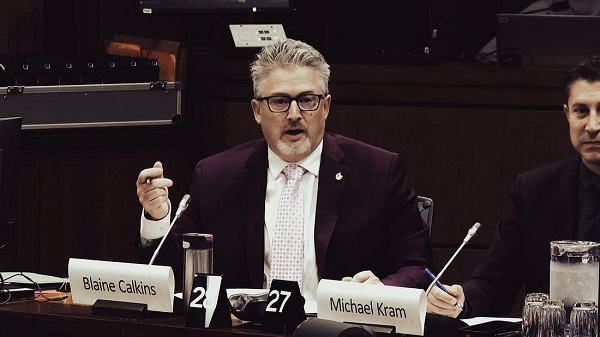
 National2 days ago
National2 days agoElection Officials Warn MPs: Canada’s Ballot System Is Being Exploited
-

 Business2 days ago
Business2 days agoPaying for Trudeau’s EV Gamble: Ottawa Bought Jobs That Disappeared
-
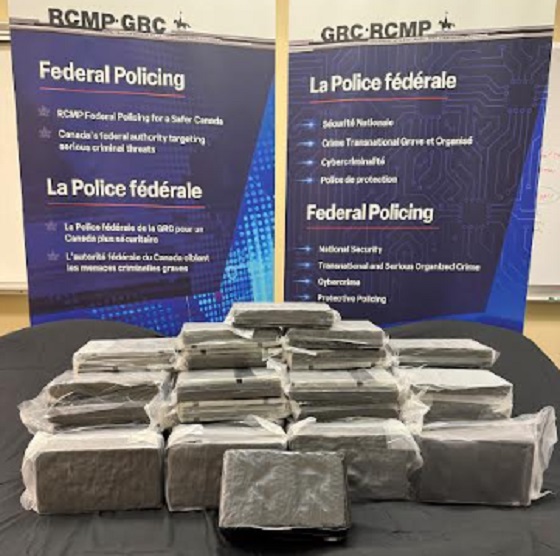
 Alberta2 days ago
Alberta2 days agoCoutts border officers seize 77 KG of cocaine in commercial truck entering Canada – Street value of $7 Million
-
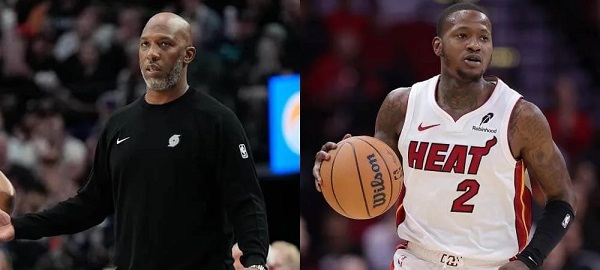
 Bruce Dowbiggin2 days ago
Bruce Dowbiggin2 days agoIs Roundball A Square Game? Sports Betting Takes Another Hit
-

 Alberta1 day ago
Alberta1 day agoPremier Smith sending teachers back to school and setting up classroom complexity task force







